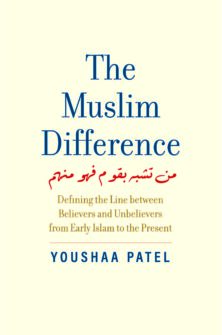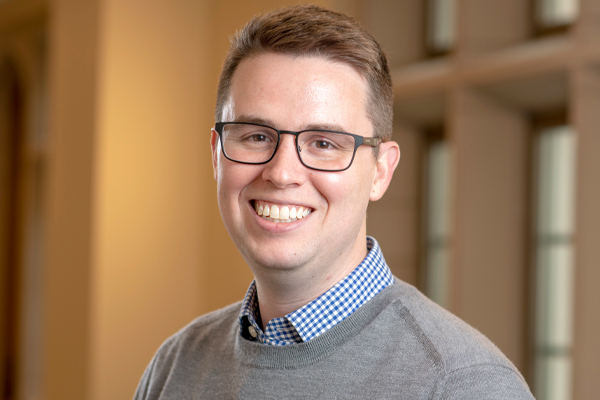 In The Muslim Difference: Defining the Line between Believers and Unbelievers from Early Islam to the Present, Youshaa Patel outlines what he terms a “genealogy of Muslim difference” (4). He traces how Muslim scholars, the ‘Ulamā, since Islam’s inception, articulated what it means to be uniquely Muslim as opposed to Christian, Jewish, Zoroastrian, pagan, etc. These differences are sometimes expressed at the level of doctrinal difference—for example, concerning the unity of God—and sometimes concern seemingly smaller differences, like the types of clothing one does or does not wear. These various forms of difference are treated by Patel with equal concern, for both are significant ways of distinguishing one form of identity from another, and both are realized in embodied historical actors. The admonition to not “imitate” and to retain one’s difference is traced by Patel through various on-the-ground interpretations of the “imitation Hadith,” which says, “Whoever imitates a people becomes one of them.” While often carrying a negative valence in the interpretive tradition, several of Patel’s interlocutors show in this symposium that it need not necessarily carry that meaning. Sometimes imitation is the way to cultivate a particular character or disposition.
In The Muslim Difference: Defining the Line between Believers and Unbelievers from Early Islam to the Present, Youshaa Patel outlines what he terms a “genealogy of Muslim difference” (4). He traces how Muslim scholars, the ‘Ulamā, since Islam’s inception, articulated what it means to be uniquely Muslim as opposed to Christian, Jewish, Zoroastrian, pagan, etc. These differences are sometimes expressed at the level of doctrinal difference—for example, concerning the unity of God—and sometimes concern seemingly smaller differences, like the types of clothing one does or does not wear. These various forms of difference are treated by Patel with equal concern, for both are significant ways of distinguishing one form of identity from another, and both are realized in embodied historical actors. The admonition to not “imitate” and to retain one’s difference is traced by Patel through various on-the-ground interpretations of the “imitation Hadith,” which says, “Whoever imitates a people becomes one of them.” While often carrying a negative valence in the interpretive tradition, several of Patel’s interlocutors show in this symposium that it need not necessarily carry that meaning. Sometimes imitation is the way to cultivate a particular character or disposition.
As noted already, Patel resists treating Muslim difference solely in terms of abstract philosophical or theological disputes between Muslim and non-Muslim communities. To do so would assume that disembodied discourses govern the lives of concrete historical actors. This problematic approach, he contends, reflects a western Protestant bias that “creates rigid (and artificial) dichotomies between belief and practice, texts and things, subject and object” (25). The former terms, often, are conceptualized as eternal and existing outside the rumble tumble of history. At the twilight of our secular age, these biases remain no less present—despite claims that they have been overcome—since this age was in part born from European Protestant Christianity, as numerous scholars cited by Patel have shown. Patel’s genealogy, for this reason, remains relevant not only to Islamic studies scholars, but scholars of religion, secularism, and modernity more broadly who seek alternative ways to conceptualize difference. Even as we witness turns to the “postsecular” and the “postliberal” as alternatives to the political and social world of modernity, we should remain alert to the way previous biases take on new forms while retaining the same flawed assumptions.
One of the key interventions that Patel makes into the discourse on Muslim difference is to suggest that imitation, by itself, is not negatively charged. Anna Bigelow brings this feature of Patel’s book out when she trains her attention on Chapter 6, “A Person Belongs with the One He Loves.” She describes the significance of thinking about Sufi models of emulation as not only objects of study, but as interlocutors who might help us unpack the ethical significance of imitation. Uniquely, Bigelow points out, the Sufis that Patel analyzes reveal imitation as a mode of self-cultivation the result of which might prove to be redemptive.
Ashwak Hauter, meanwhile, puts Patel’s history into conversation with her own ethnographic fieldwork among Muslim physicians and patients. She focuses especially on afiya, which are the “ethico-religious virtues” that guide Muslim physicians. Difference here is marked by the way physicians seek to incorporate Islamic ways of understanding into their medical practice, rather than simply imitate the practices of doctors in the US and Europe. This notion of difference, Hauter contends, is deeply embedded in the Islamic tradition, penetrating into the difference between the self and the soul. Such theologically robust understandings of difference make possible a “field of possible exchange, recognition, and innovation.”
Martin Nguyen switches the register of engaging difference from the “cultural” or “religious” to the broader level of the human species. On Nguyen’s account, we are programmed, as human animals, for difference. The danger is when we place ourselves at the center of humanity and inscribe the differences we see in others with a negative connotation. To recognize one’s own “inhumanity,” Nguyen contends, is necessary if we are to deflate the triumphalism that attends to those in power who reject or ignore difference.
Haroon Sidat, finally, draws on Patel’s work to better understand his own experience of working among imams in the UK as part of his ethnographic fieldwork. He notes how he was transformed as he imitated the imams with whom he was working. This transformation, he makes clear, is one that cultivated a unique ethical and religious worldview in him. In this way, Sidat shows how imitation is not of relevance only for those we “study,” but also for our own moral cultivation.
Patel, in his response, takes up the themes engaged with by his interlocutors, focusing especially on the ethically ambiguous nature of imitation as understood within the historical Islamic tradition. He ends his piece by suggesting that his wider goal in the book is to make possible a positive vision of “Muslim difference” that neither rejects nor assimilates to the west. Indeed, his hope is to offer resources for building a “Muslim modernity” from the sources that have sustained the tradition.
Taken together, these essays represent the many paths of inquiry that Patel’s book opens up, whether that be in how we conduct fieldwork, think about the problem of difference philosophically, or understand the aims of the study of religion. As we continue to grapple with the rise of populism, oligarchy, and nationalism across the globe, Patel’s study of religious difference reminds us that imitation and difference are multilayered and contain the potential for influencing various forms of political and social life.

